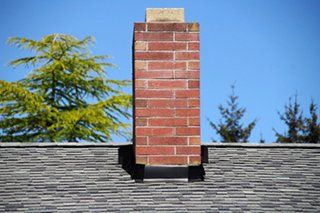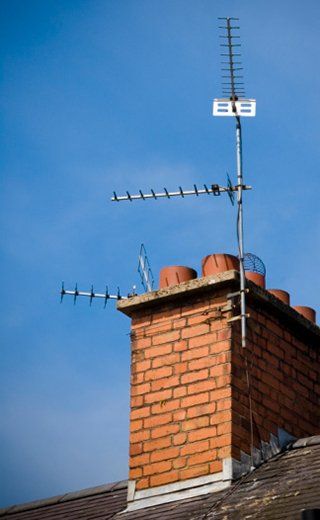Exceeding Minimum Requirements
The “first flue tile” installation method for wood stoves and inserts, which are vented through masonry fireplaces, solved many problems. For those committed to the use of a wood stove or insert for heat, a more efficient, easier to maintain and ultimately safer method is available, which your chimney specialist may recommend for you. That method calls for the vent pathway to extend from the stove collar all the way to the top of the flue – creating a new chimney liner within the chimney. This new chimney liner is sized correctly for the wood stove or insert, so drafting the smoke out of the system is less likely to be a problem. In addition, it is an easy and economical way to extend the life of your chimney, since the new liner protects the existing structure from heat deterioration and acid-based smoke condensation.
Types of Lining Systems
There are three types of tested and listed lining systems available: stainless steel; poured-in-place or pumped; and ceramic. The one you select may be determined by the kind of wood stove or insert you have and the condition of your chimney’s structure. Your chimney specialist will help you decide which system will serve you best.
Stainless steel chimney liners – tested and listed to Underwriters Laboratories (U.L.) standards – run from your stove to the top of your chimney and should include an insulating system to assure stable temperatures within the flue and help prevent heat transfer to combustible parts of the house.
Pumped liners create a newly-sized flue by pumping a special slurry mixture around a form, allowing it to harden and then removing the form. Poured-in-place systems use a vibrating “bell” to compress the mixture into place. The mixtures are tested and listed to U.L. standards for chimney liners. They result in a smooth, hard-surfaced flue that runs from the top of the chimney to the smoke chamber and sometimes continues to the damper area. A length of connector pipe makes the final connection from the new flue to the stove.
When You Properly Size Masonry Fireplace Flues for Stoves & Inserts…
If you want to use the fireplace in the future, a removable stainless steel liner is the appropriate choice. If the proper sizing of the flue is achieved in a more permanent manner in order to accommodate a wood stove or insert, future use of the fireplace may depend on some modification.
Ceramic liners are installed inside the chimney with a special setting tool, and a connector is extended to the wood stove. An insulator is poured around the liner. The liner and insulator together are tested and listed to U.L. standards.



